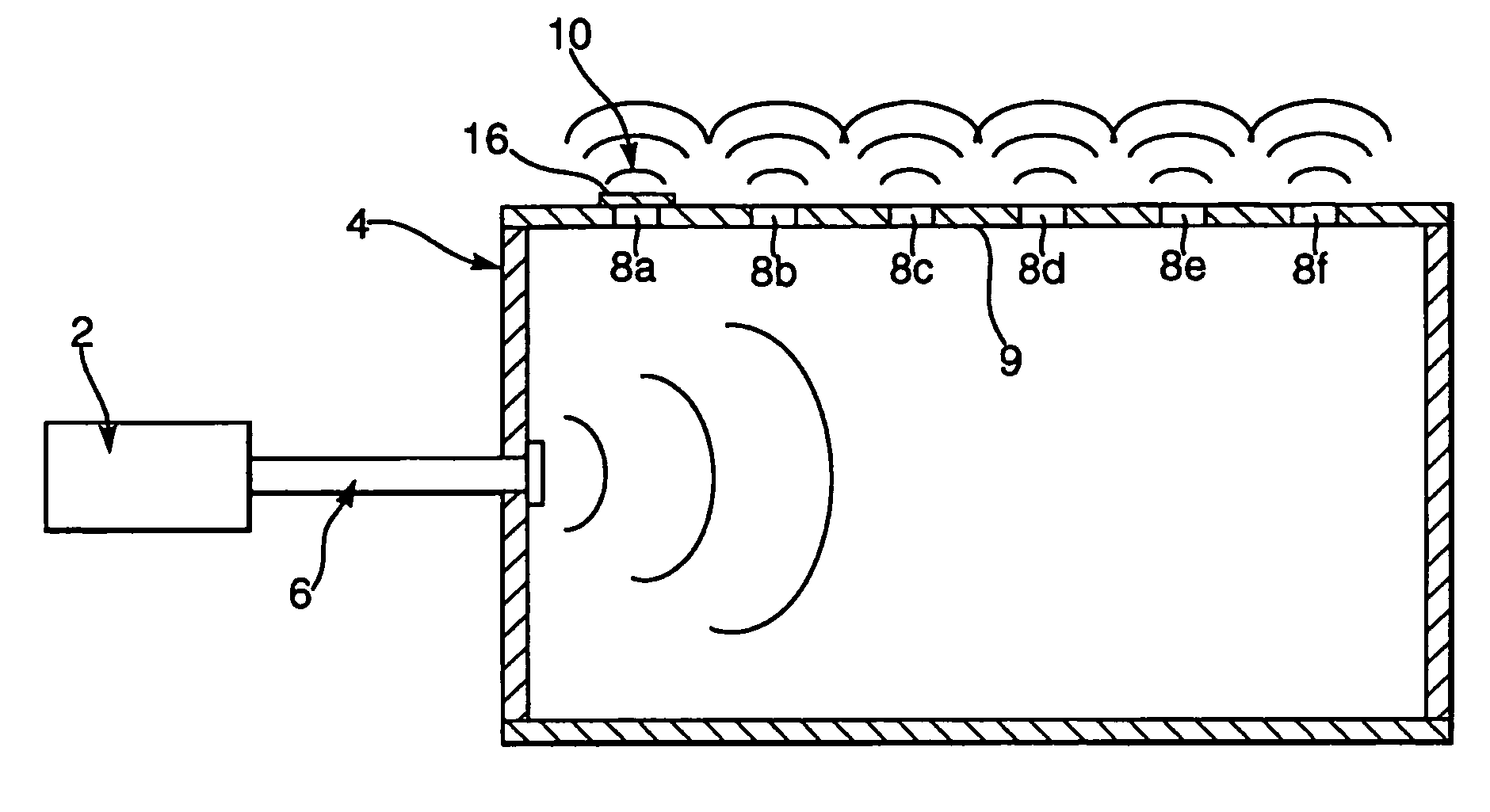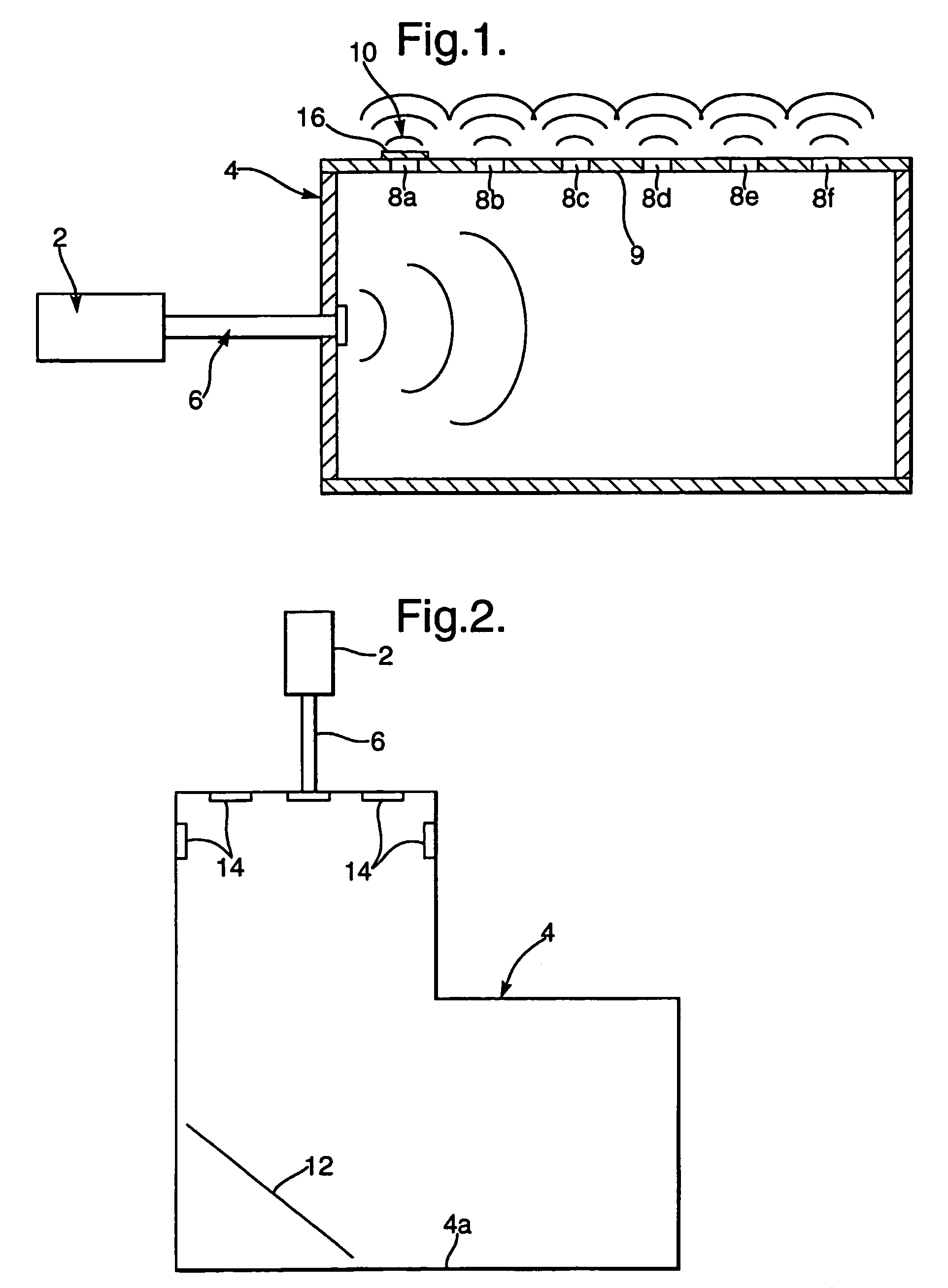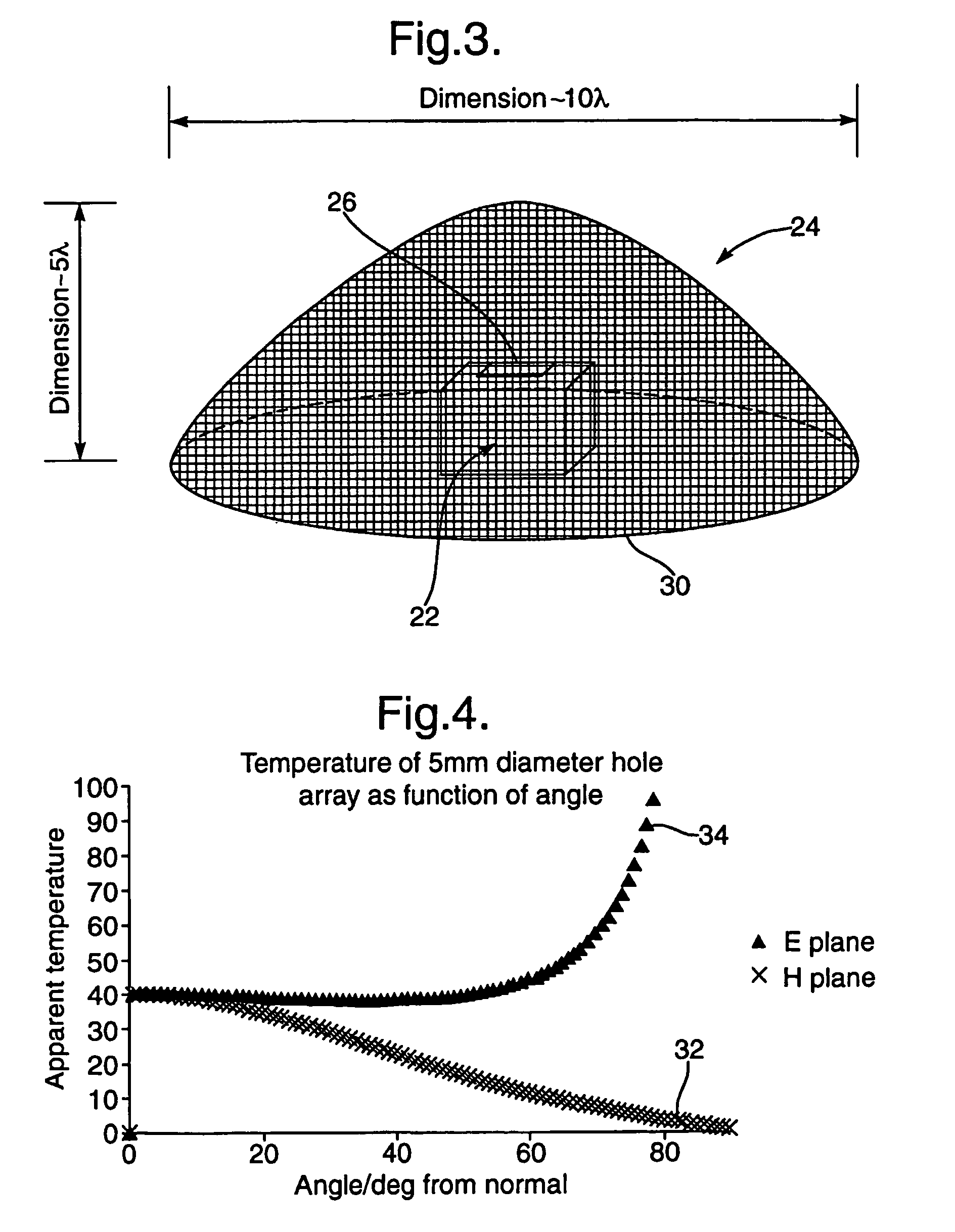Millimetre-wave illumination source
a millimetre-wave illumination and millimeter-wave imaging technology, applied in the direction of individually energised antenna arrays, instruments, and reradiation, can solve the problems of difficult real-time interpretation of generated images, high energy consumption, and inability to provide recognisable images of passive non-metallic objects, so as to achieve careful control of aperture size and shape, the effect of less power
- Summary
- Abstract
- Description
- Claims
- Application Information
AI Technical Summary
Benefits of technology
Problems solved by technology
Method used
Image
Examples
Embodiment Construction
[0048]In the arrangement in FIG. 1 millimeter-wave electromagnetic radiation is generated in a millimeter-wave source 2, such as an amplified noise source and is coupled into a metal box 4 using waveguide 6. The source 2 will generate millimeter-wave radiation associated with a temperature which is either much higher or much lower than the ambient temperature of the objects in the area being imaged. In this way higher contrast can be introduced into the generated image. The metal box 4 has an internal reflective surface which may, for example, have a reflectivity of 0.5 or greater at the operating wavelength. At least one side of the box 9 is formed with an array of through holes or apertures 8, which may for example be circular, six of which (8a-8f) can be seen in FIG. 1. Normally the array will be two-dimensional, although the use of a one-dimensional or linear array also falls within the scope of the invention. The waveguide 6 has an aperture at its end remote from the source 2 h...
PUM
 Login to View More
Login to View More Abstract
Description
Claims
Application Information
 Login to View More
Login to View More - R&D
- Intellectual Property
- Life Sciences
- Materials
- Tech Scout
- Unparalleled Data Quality
- Higher Quality Content
- 60% Fewer Hallucinations
Browse by: Latest US Patents, China's latest patents, Technical Efficacy Thesaurus, Application Domain, Technology Topic, Popular Technical Reports.
© 2025 PatSnap. All rights reserved.Legal|Privacy policy|Modern Slavery Act Transparency Statement|Sitemap|About US| Contact US: help@patsnap.com



